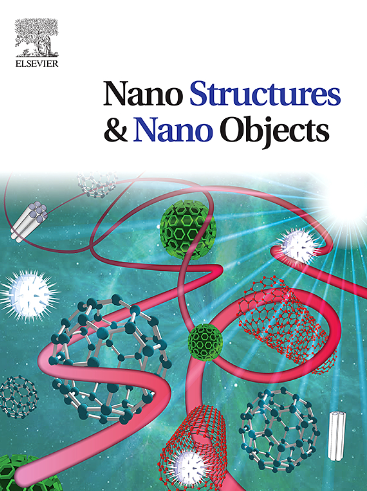平行板间瞬态对流下swcnts和MWCNT混合纳米流体热效率的研究
IF 5.45
Q1 Physics and Astronomy
引用次数: 0
摘要
瞬态磁流体动力学对流是指单壁碳纳米管(SWCNT)和多壁碳纳米管(MWCNT)/水(H2O)混合纳米流体在两个平行板之间的流动,在科学和工程上有许多应用。特别是电线、纤维片、光纤、光电器件和太阳能电池的涂层的设计和制造。研究了外加磁场对流体输运特性的影响。研究了不同形状的纳米颗粒的热效率行为。本研究着眼于流动问题,如对流、混合纳米流体性质和外加磁场。流体流动用具有特定边界条件的耦合偏微分方程在数学上表示。将有限差分法与适当的类似变换相结合,将控制方程转化为无量纲形式。根据模型中不同物理参数的模拟,混合纳米颗粒加入基液比单独加入基液和纳米流体获得更好的传热效果。流速比和对流参数组合的值越大,混合纳米流体的速度越快。随着swcnts - mwcnt的磁性参数和体积分数的增大,杂化纳米流体的温度急剧升高。本文章由计算机程序翻译,如有差异,请以英文原文为准。
Investigation of thermal efficiency in SWCNT and MWCNT hybrid nanofluids under transient convection between parallel plates
Transient magnetohydrodynamic convection, that entails the flow of single wall carbon nanotube (SWCNT) and multiwall carbon nanotube (MWCNT)/water (H2O) hybrid nanofluid between two parallel plates, has several applications in science and engineering. In particular, coatings for wires, fibre sheets, optical fibres, photoelectric devices, and solar cells are designed and manufactured. The effects of an external magnetic field on fluid transport properties are investigated. The thermal efficiency behavior of various nanoparticle form factors is investigated. This study looks into flow concerns such as convection, hybrid nanofluid properties, and the applied magnetic field. Fluid flow is represented mathematically by coupled partial differential equations with specified boundary circumstances. The finite difference method is being used in conjunction with the appropriate analogous transformations to convert the governing equations into dimensionless form. Better heat transfer is obtained when hybrid nanoparticles are added to base liquid as opposed to base fluid and nanofluid alone, according to simulations for different physical parameters in the model. Greater values of the velocity ratio and combination of convection parameters result in a rise in the hybrid nanofluid's velocity. As the magnetic parameter and volume fraction of SWCNT-MWCNT grows, temperature of hybrid nanofluid rises sharply.
求助全文
通过发布文献求助,成功后即可免费获取论文全文。
去求助
来源期刊

Nano-Structures & Nano-Objects
Physics and Astronomy-Condensed Matter Physics
CiteScore
9.20
自引率
0.00%
发文量
60
审稿时长
22 days
期刊介绍:
Nano-Structures & Nano-Objects is a new journal devoted to all aspects of the synthesis and the properties of this new flourishing domain. The journal is devoted to novel architectures at the nano-level with an emphasis on new synthesis and characterization methods. The journal is focused on the objects rather than on their applications. However, the research for new applications of original nano-structures & nano-objects in various fields such as nano-electronics, energy conversion, catalysis, drug delivery and nano-medicine is also welcome. The scope of Nano-Structures & Nano-Objects involves: -Metal and alloy nanoparticles with complex nanostructures such as shape control, core-shell and dumbells -Oxide nanoparticles and nanostructures, with complex oxide/metal, oxide/surface and oxide /organic interfaces -Inorganic semi-conducting nanoparticles (quantum dots) with an emphasis on new phases, structures, shapes and complexity -Nanostructures involving molecular inorganic species such as nanoparticles of coordination compounds, molecular magnets, spin transition nanoparticles etc. or organic nano-objects, in particular for molecular electronics -Nanostructured materials such as nano-MOFs and nano-zeolites -Hetero-junctions between molecules and nano-objects, between different nano-objects & nanostructures or between nano-objects & nanostructures and surfaces -Methods of characterization specific of the nano size or adapted for the nano size such as X-ray and neutron scattering, light scattering, NMR, Raman, Plasmonics, near field microscopies, various TEM and SEM techniques, magnetic studies, etc .
 求助内容:
求助内容: 应助结果提醒方式:
应助结果提醒方式:


